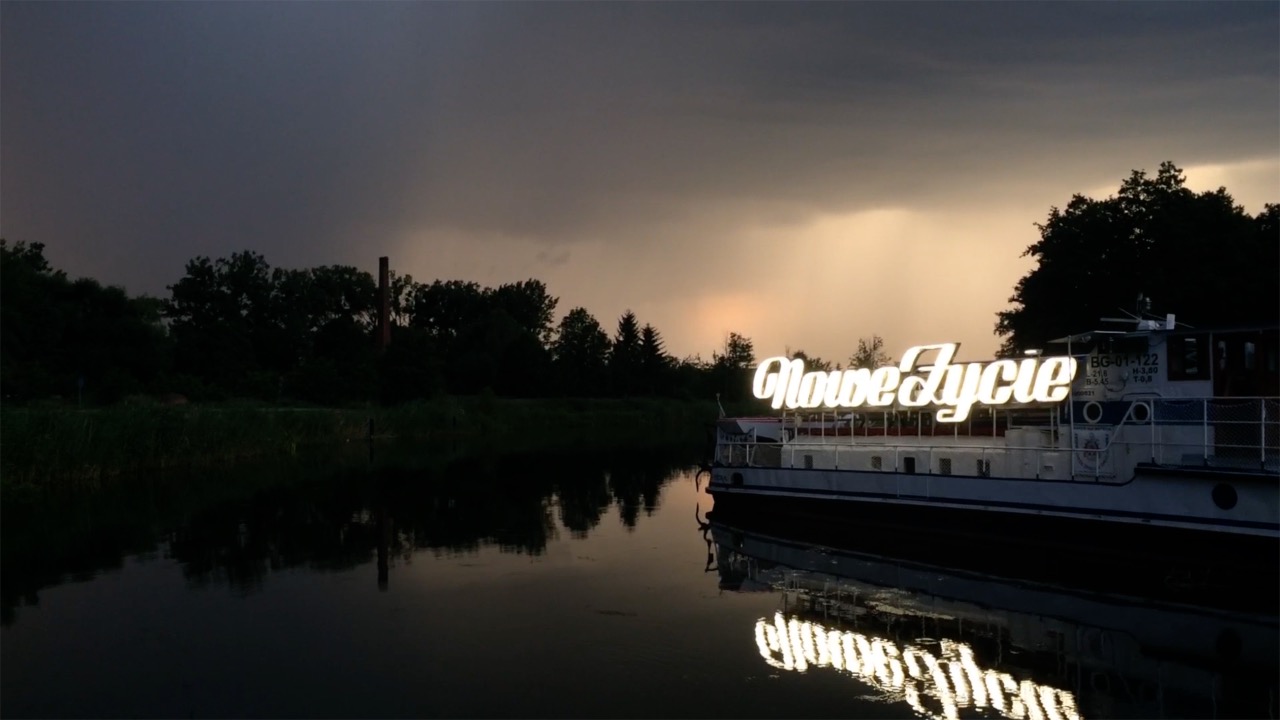New Life[1] by Elżbieta Jabłońska, with sound by Wojtek Kotwicki, is a record of the eponymous neon's six-day journey down the waterways from Nakło to Berlin. The neon was attached to the side of the Władysław Łokietek ship from the Inland Navigation School in Nakło and lit up every evening. Although the dimensions of this over ten-meter object seem to contradict any mobility, it has appeared whererever there was a clear need for change and where events' participants demanded for their voices to be heard. The neon became a symbol of their postulates, and at times a tool for finding meaning in everyday life or establishing new art contexts. Following the route of the neon (partly along the E70 International Waterway),
Jabłońska documents the landscape of nature and culture and, by stopping time, creates an analysis that is devoid of details.
[1] The artist found the ten-meter neon sign of the Agricultural Production Cooperative in Trzeciewiec near Bydgoszcz at a scrapyard; it was restored thanks to the cooperation of several art galleries.





